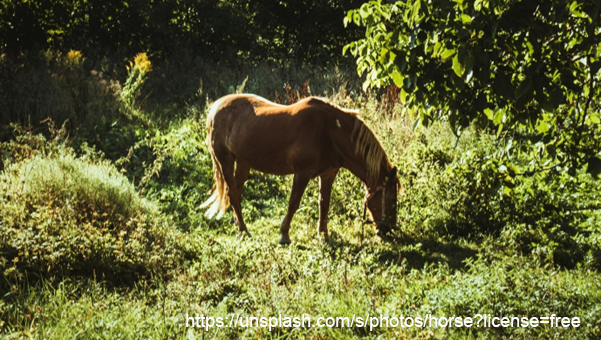Gridwork and polework clinic with Lucinda Atkinson
Saturday 29 November 2025
Entries close in 4 days

With environmental issues at the forefront of everyone's minds, it's as important as ever to consider the impact of our day-to-day lives, including horse care. Here, Katie Allen-Clarke from Horse & Country shares her tips for reducing your horse’s carbon hoofprint.
As awareness of environmental issues grows, understanding and reducing carbon footprints has become increasingly important across various industries, including equestrianism. Factors like your horse’s size, feed, and travel can impact its carbon footprint, with smaller horses and less frequent travellers having the smallest impact. Agria and Eco Offset have partnered up to create a carbon hoofprint calculator, so you can see an estimate of your horse’s carbon emissions. However, no matter the size of our carbon footprint, we can all make changes in our lives to help offset emissions and minimise our impact on the planet. To help make your horse care a little greener, read our tips below for reducing your horse's carbon hoofprint.
Taking care of the area your horse grazes in can help preserve it. Rotational grazing involves dividing pasture land into smaller sections and rotating horses between these sections regularly. This practice allows for optimal forage growth, prevents overgrazing, and promotes pasture health while ensuring horses have access to fresh, nutritious grass.
As part of your pasture management, you can implement a composting system to transform manure into nutrient-rich fertiliser to use in your garden or pasture. You can also give out surplus compost to neighbours, reusing old feed bags to help with transport and reduce your carbon footprint further.
Making a few eco-friendly swaps around your yard can make a big impact on your horse’s carbon hoofprint. For example, making the switch to energy-efficient bulbs, motion-sensor lights, natural sponges, or collecting rainwater to use when cleaning your horse’s stable are small but sustainable changes you can make. If you haven’t already, swapping from hosepipe to buckets for bathing your horse can also help conserve water.
Your pest products may have some eco-friendly alternatives too. For example, some commercially available fly sprays can contain pesticides which may be harmful to the environment as well as irritating to your horse. Luckily, you can make your own eco fly spray by mixing equal parts water and apple cider vinegar with a few drops of essential oils (such as citronella, eucalyptus, lavender, or peppermint) and a squirt of dish soap. You can reuse an old spray bottle to make your homemade spray even more eco-friendly. If DIY isn’t your thing, there are many eco-friendly fly sprays on the market too.
Reducing your horse’s carbon hoofprint extends beyond their daily care. Your equipment can also have an influence on your environmental impact. Throwing away unwanted or broken tack can contribute to landfill waste, while also feeding into the production of new equipment.
Keeping your tack in good condition can help prolong its lifespan, so make sure to clean and condition your leather tack once a week. This will help reduce dirt, grime, and sweat that can cause premature wear and discolouration. As you’re cleaning, check your tack over for signs of wear and tear, as detecting things like rips and loose stitching can make them much easier to repair. This applies to your riding clothing too.
If you do need new tack, consider buying second-hand or participating in an equipment swap with another rider or local livery. Not only can this help reduce waste, but it can save you money too! And if you buy new, look for eco-friendly tack and equipment made from sustainable materials.
Riders who frequently attend events will be all too familiar with the amount of travelling you need to do with your horse. And although these journeys can be a major contributor to our horse’s carbon hoofprint, there are steps you can take to make them more efficient.
The average petrol car produces 163.9g of CO2 equivalent per kilometre, while the average diesel car produces even more, at 169.8g of CO2 equivalent per kilometre (Statista). If you're transporting your horse or pony to attend a show or visit a clinic, consider sharing the journey with a friend to cut down on your fuel consumption and emissions.
Together, by making a few mindful swaps, we can make a meaningful difference. By implementing the tips and strategies outlined here, equestrians can play a role in reducing their horse’s carbon hoofprint. For even more horse care tips, take a look at the articles at Horse Events UK.